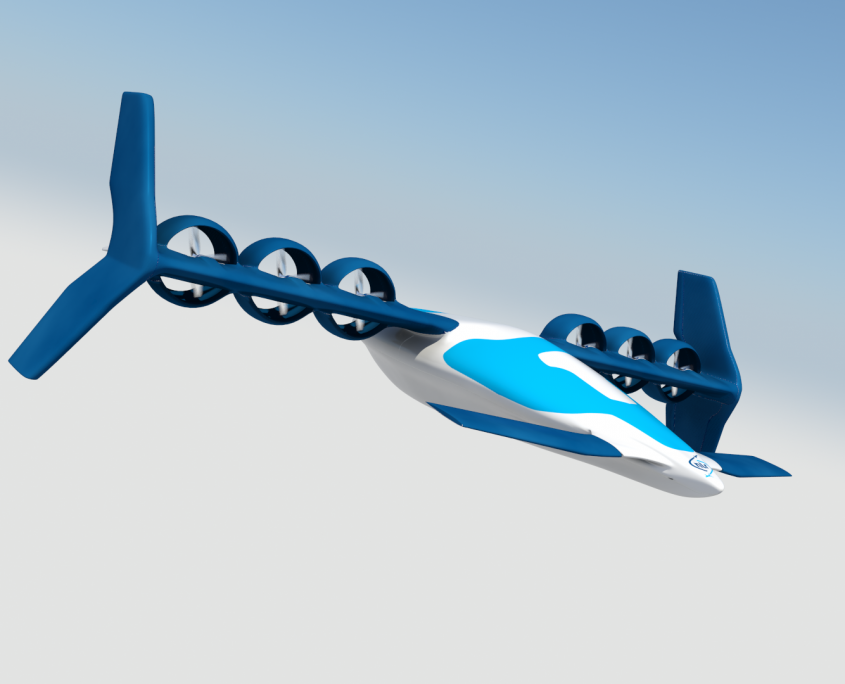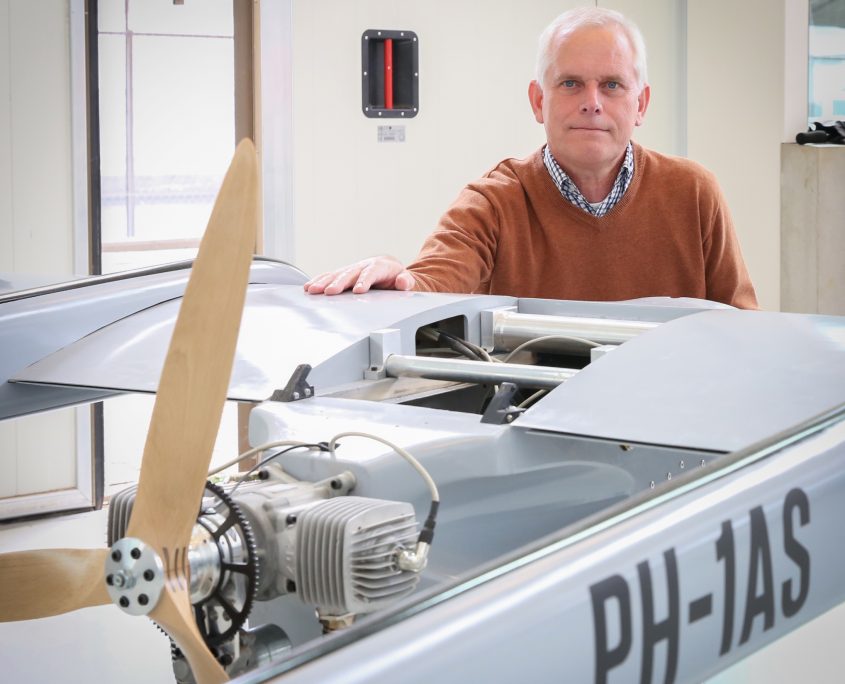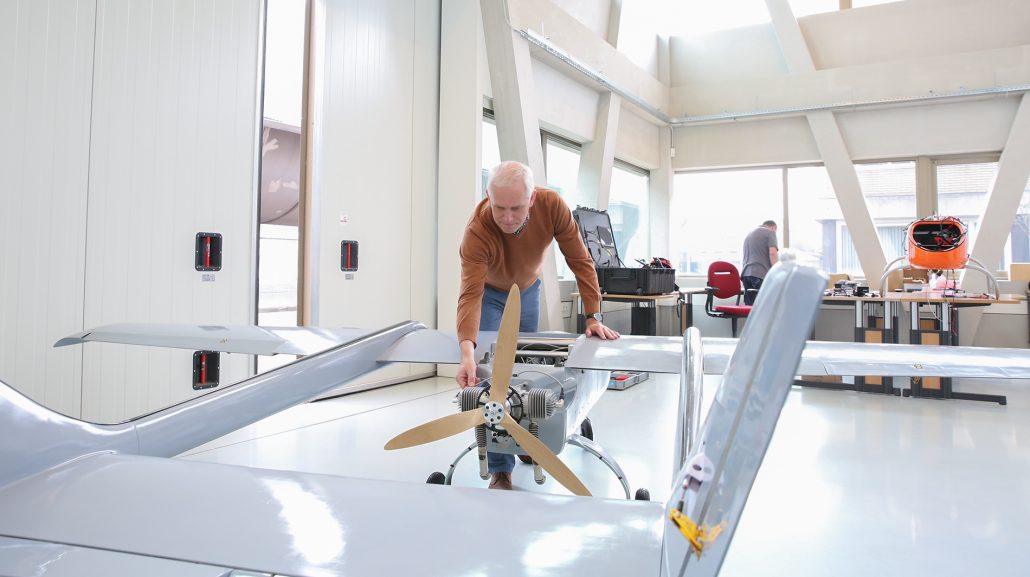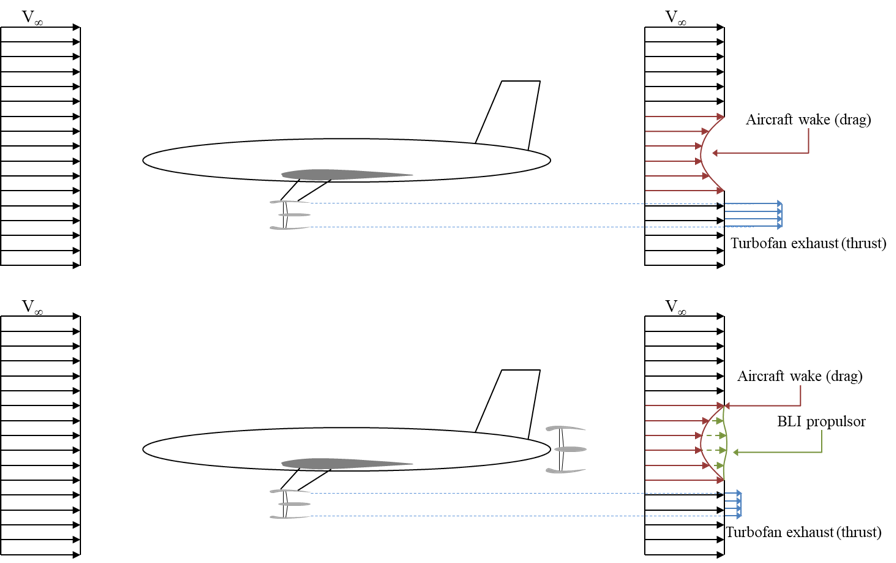One of the upcoming innovations in aviation is electric aircraft propulsion. Prototypes of small electric aircraft (general aviation), typically seating 1 to 4 people, are already being tested. However, it will be some time before an actual airliner for 100 or more passengers will be fully electric. Getting an aircraft into the air and keeping it there takes a lot of energy and the batteries required to store all that energy would make aircraft far too heavy. To resolve the issues of energy storage and propulsion of large airliners, a number of major technological hurdles will need to be dealt with. For that reason, a great deal of research is currently centring on combining conventional and electric propulsion, so-called hybrid electric propulsion.
Together with Delft University of Technology, NLR is researching hybrid electric propulsion in the Novel Aircraft Configurations and Scaled Flight Testing Instrumentation (NOVAIR) project as part of the Clean Sky 2 programme, the largest European research programme focusing on new technologies to reduce noise, CO2 and other harmful emissions produced by aircraft. In NOVAIR, researchers focus on how the next generation of large passenger aircraft can be equipped with hybrid electric propulsion.
NLR’s expertise really comes into its own here, not least thanks to the Scale Model Aircraft & Research Development (SMARD) programme it has been working on for some time. This programme focuses on the use of free-flying scale models that can be used for tests that are not possible with traditional wind tunnel models. Furthermore, the technological and financial risks are far smaller and more controllable when using scale models. Especially for non-conventional aircraft and propulsion concepts, these scale models offer an ideal way of testing new configurations safely and cost-effectively.
Henk Jentink and one of the training devices NLR is developing to fly large fixed wing scale models
Hybrid Electric Propulsion (HEP) can become an important step in the development of large passenger aircraft, provided it is shown to be achievable and leads to the desired energy economy. Recent estimates from different initial European and American studies suggest that HEP could potentially reduce fuel consumption by between 7 and 12 percent. This could contribute towards the targets set by public bodies including the European Commission (Flightpath 2050) and the International Civil Aviation Organization (ICAO). Flightpath 2050, for instance, stipulates reductions in CO2, NOx and noise emissions of 75, 90 and 60 percent, respectively, by 2050, with aircraft built since 2014 as the baseline.
 Henk Jentink, Project Leader of NOVAIR, considers hybrid propulsion a stepping stone on the way to fully electric propulsion, where it is still far from certain when aircraft carrying more than 100 passengers will be fully electric. The most important reason for the use of kerosene right now is that it is extremely energy-dense and therefore saves a great deal of weight in comparison to batteries. On the other hand, an electric engine is far more energy-efficient and scalable, allowing a string of electric engines to be installed, for instance along the entire length of a wing. The potential advantage of hybrid propulsion lies mainly in smart design. A clever combination of electric and kerosene-driven engines could reduce the total energy requirement for a mission by some or, potentially, many percent.
Henk Jentink, Project Leader of NOVAIR, considers hybrid propulsion a stepping stone on the way to fully electric propulsion, where it is still far from certain when aircraft carrying more than 100 passengers will be fully electric. The most important reason for the use of kerosene right now is that it is extremely energy-dense and therefore saves a great deal of weight in comparison to batteries. On the other hand, an electric engine is far more energy-efficient and scalable, allowing a string of electric engines to be installed, for instance along the entire length of a wing. The potential advantage of hybrid propulsion lies mainly in smart design. A clever combination of electric and kerosene-driven engines could reduce the total energy requirement for a mission by some or, potentially, many percent.
Future HEP enablers
The NOVAIR project was kicked off in December 2016 and will run for six years in total. Most of the research has therefore yet to take place. Jentink and his team were happy to tell us about the possible solutions they are interested in. These are focused predominantly on leveraging three key advantages that HEP propulsion will enable.
A: Combination of jet engine and electric engine
A relatively simple form of HEP drive that NLR’s NOVAIR researchers are working on is a combination of a jet engine with a fan, with an electric engine built into that same engine. An advantage of such an HEP system is that a relatively small, and therefore lighter, jet engine would be required for the intended mission. This jet engine would be able to operate slightly more efficiently, especially in the relatively long cruise phase of the mission.
B: Boundary layer ingestion propulsion
The research into HEP has also brought other technologies into focus, including boundary layer ingestion (BLI) propulsion. The efficiency gain expected from this technology is based on the shape and positioning of the engine, by using the airflow slowed by the viscous friction in the boundary layer and reaccelerating it. Accelerating the decelerated airflow in the boundary layer requires less energy than accelerating the free airflow as is the case for conventionally positioned engines. Current jet engines, for instance, are suspended under a wing and are basically obstacles in the free airflow. Plans surrounding BLI have been around since the 1960s and, thanks to electrification, are now slowly starting to look like a realistic option for civil aviation purposes.
BLI advantage. The turbofan has to generate enough thrust to overcome the aircraft’s drag (top). A boundary-layer ingesting propulsor could accelerate the slower moving air in the aircraft wake (bottom). The turbofans could then be downsized, since they have to generate less thrust, which leads to weight savings and drag reductions, increasing the overall efficiency.
C: Distributed propulsion
 Using multiple smaller engines, for instance along most of the length of an aircraft’s wing span, i.e. distributed propulsion, is another energy-saving option when electric engines are used. The ‘propulsors’ are positioned along the entire width, creating benefits in terms of an aircraft’s aerodynamic behaviour and lower wing loads. This technology will also make it easier to compensate in the event of engine failure.
Using multiple smaller engines, for instance along most of the length of an aircraft’s wing span, i.e. distributed propulsion, is another energy-saving option when electric engines are used. The ‘propulsors’ are positioned along the entire width, creating benefits in terms of an aircraft’s aerodynamic behaviour and lower wing loads. This technology will also make it easier to compensate in the event of engine failure.
There are still many challenges ahead for the project as a whole, Jentink warns. It is too early to say anything about which way things will go. The advantages of distributed propulsion and boundary layer ingestion are potentially greater propulsive efficiency, less drag, better lift, improved control over the aircraft, less noise, enablement of different (potentially modular) designs, and energy regeneration. Therefore, detailed studies of subsystems for HEP will first need to be conducted, after which there could be a clear path for these propulsion systems to be implemented.
Scaled flight testing validation
In addition to researching the design of aircraft and propulsion concepts, developing new testing methods for these concepts is also an important part of the NOVAIR project. This concerns research into the use of scale models, which is expected to result in considerable savings.
Knowledge about the effects of tests with a scaled model obtained in NLR’s own SMARD research project can be used to develop a set of instruments for a scale model for the NOVAIR project. Initially, this will be a model of an existing, commonly used aircraft type built by Airbus. This aspect also overlaps with another project that is part of the Clean Sky 2 Large Passenger Aircraft programme – SCALAIR, that is also being conducted by NLR. While the set of instruments is developed by NOVAIR, the actual scale model will be built within SCALAIR. The scaled test method will be validated using the model of the aircraft and actual flight data. This validation is scheduled for late 2020. After that, a radically new aircraft configuration will be tested over a two-year period. If everything goes according to plan, this project will be completed in December 2022. That time will be used to produce a synthesis of the HEP-based radical aircraft design and the development of the set of instruments for building a scale model.
 Within the Airbus-led NOVAIR project, NLR collaborates with different partners to develop the aircraft concepts and test methods. In addition, NLR’s various departments have an expansive knowledge base that will be used for the project. When electric aircraft will be taken into actual operation is impossible to predict, so Jentink was neither willing nor able to give us a date. However, it is highly likely we will see some form of electric aircraft become a reality one day.
Within the Airbus-led NOVAIR project, NLR collaborates with different partners to develop the aircraft concepts and test methods. In addition, NLR’s various departments have an expansive knowledge base that will be used for the project. When electric aircraft will be taken into actual operation is impossible to predict, so Jentink was neither willing nor able to give us a date. However, it is highly likely we will see some form of electric aircraft become a reality one day.
More information: Henk Jentink
Project context and disclaimer
NOVAIR research is developed in the Clean Sky II project of the Large Passenger Aircraft IADP. This project has received funding from the Clean Sky 2 Joint Undertaking under the European Union’s Horizon 2020 research and innovation programme under grant agreement. This message doesn’t necessarily reflect the views of the JU Clean Sky.





